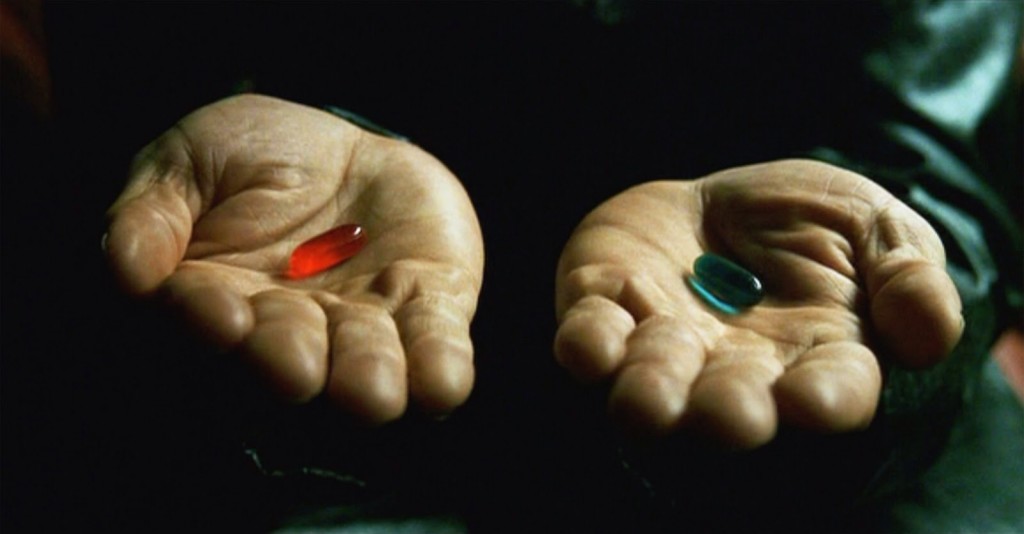Leather Care Liniment or Water Protectant?
Posted by Daniel Sutton on Mar 15th 2015
There's a problem I run into frequently working here at Leather Milk. When I've got two of the finest leather care recipes in the world sitting in front of me, how should I be expected to choose just one? There's Leather Care Liniment, the most versatile and dexterous conditioner of them all, with a gentle touch and lasting results. On the other side is Water Protectant - proud bastion of protection and sworn defender against the elements of rain and snow.
I feel like I'm a kid staring through the window of a candy shop.
There's one logical answer to this problem. Use both! I'll warm my leather briefcase up with a bit of Leather Care Liniment, and then seal everything under a slather of Water Protectant.
I'll tell you what's likely to come of this. Your leather is going to feel initially drenched and waxy, because the conditioner has yet to set. You wait an hour, and rather than feel the supple, sublime touch of freshly conditioned leather, some of the residue is still stuck to the surface, giving the whole thing a tacky, moist texture. You wait overnight, and it's still there, sticking to your fingers and attracting dust in teeming hordes. Ick!
Ever hear the phrase "too much of a good thing?" Totally applicable here.
Subtraction of its Parts
The short of it: just as there's a biological limit to how much pizza we can consume in one sitting, there is a biological limit to how much conditioner leather can eat in one conditioning. When this substance is absorbing, it is travelling down tiny pores into a tangled network of tiny fibers that hold your leather together. In large quantities, the oils within conditioner can become clogged inside of the leather's pores, and trap the remaining residue on the surface. As your conditioner sets, the moist residue that lubricates the inside of your leather so well turns the outside into a syrupy mess.
Many people have recommended not using leather conditioner at all for this precise reason. Whether because of bad experiences with heavy conditioners like mink oil, a recipe containing large amounts of animal fats. On porous leathers like vegetable tanned and unfinished leather, using a conditioner like mink oil can be disastrous (even though they may work exceedingly well on other leathers). It is simply very easy to overdo it.
However, without conditioner, leather will slowly lose its supple qualities overtime, and the fibers, devoid of these vital lubricants, will become razor-like, grinding against each other as your leather flexes, and will eventually lead to cracking and complete decomposition.
It takes a while to get there usually, but it's not the best way to go if you want your leather companion to go the distance. So what's the best way to go? That's for you to decide. You take the blue bottle, the soaked hide and salt stains end. You walk into the rain with your leather briefcase and go wherever you want. You take the reddish bottle, your leather goes to wonderland, and I show you how rich your tobacco hue can get.

Let the Rabbit Decide
Or for a less Morpheus narration about what you'll get out of No. 1 and No. 3, I'd recommend you check out our streamlined profiles: "Leather Care Liniment Guide" and "Water Protectant Guide." Although it's possible to use both of these effectively on the same leather item, it's tough. Even when using a single, stand alone recipe, you have to gauge how much you use very carefully. Use a little conditioner at a time, letting absorb naturally. Don't rub it in - trust the leather to gobble that good stuff up naturally. This is also a good way to avoid dye rub off - where your pad suddenly turns red or black and brown - draining dyes from the bag you're supposed to be beautifying. Once the conditioner is on, it acts like a shield, sealing the color in. Layer on a few gentle, even spreads, and let it set overnight, and you'll have never seen your leather looking sweeter.
In case you've got the kind of leather that darkens real easy, and standard conditioners don't have the punch to keep the rain and snow away, you've got other options. Silicone spray is a popular alternative to conditioners, in severe climates. Unlike Water Protectant, these sprays fully waterproof your leather, so that absolutely no moisture will be passing through the gates. The downside? Nothing else passes through either. Leather won't be breathing, won't be taking conditioner, won't be releasing harmful contaminants trapped beneath the pores. It's harmful in the long run, but extremely effective for a short time. If you plan to take a trip somewhere extreme, silicone might be good solution for you. Just remember to read the manufacturer's instructions and always play things safe. Once you've given leather a bite of something, it's going to be really hard to pull that bit back out. It's just not proper to regurgitate.

Unless you're Hedwig
Moral of this story? Know your leather. Know your leather conditioner. Don't overdo it. Pairing the two is like matchmaking. You're going to have many years of delight, or a romantic comedy somebody else is going to laugh at at your expense. Your choice. Cheers!
Contributors
Daniel Sutton
Saddleback Leather

